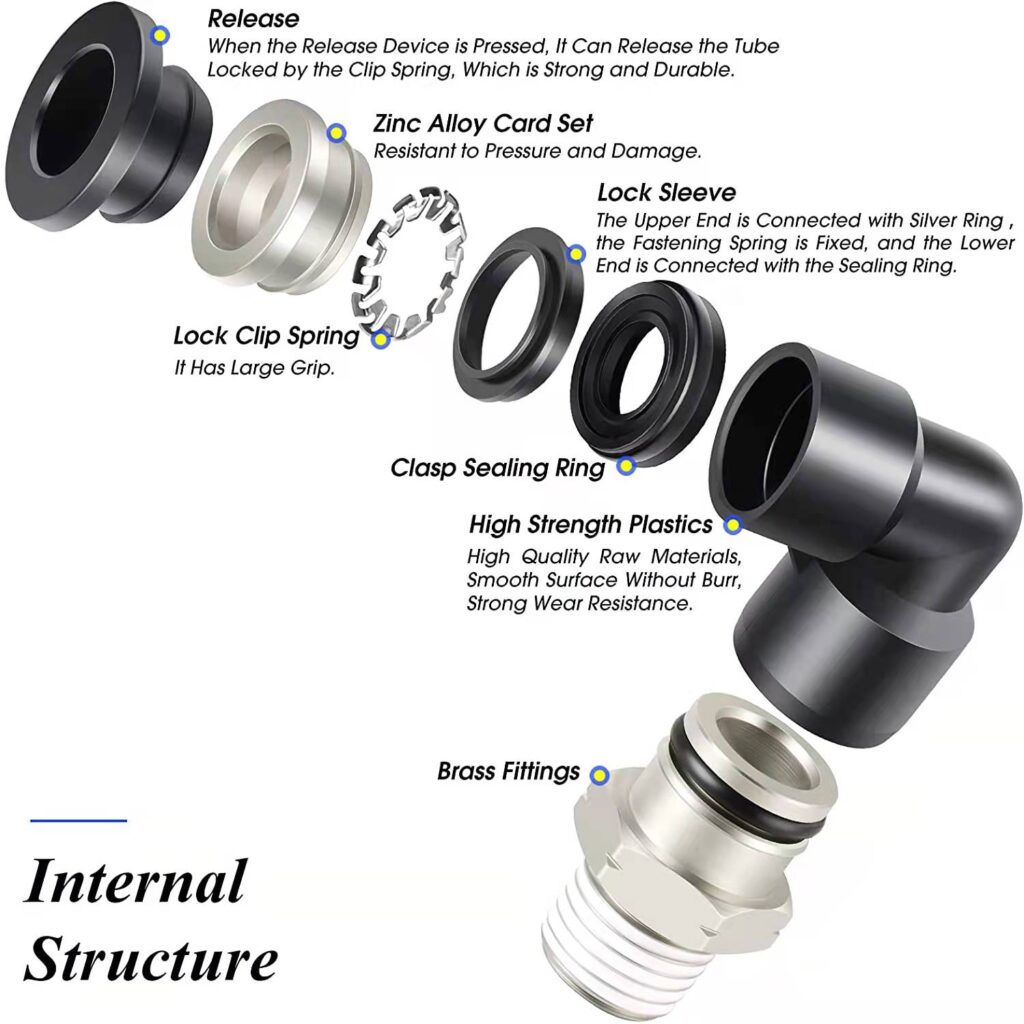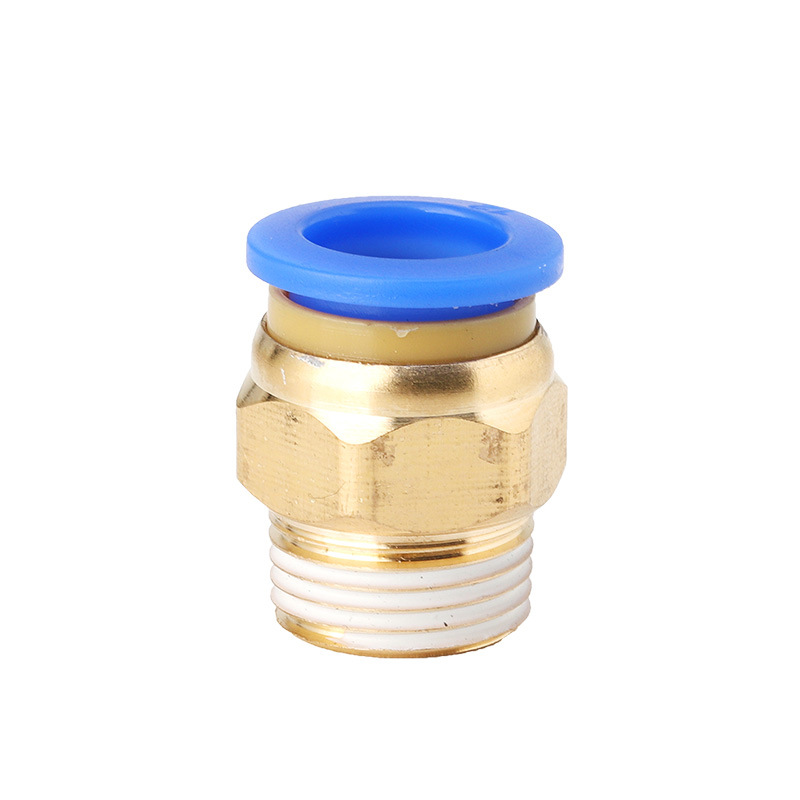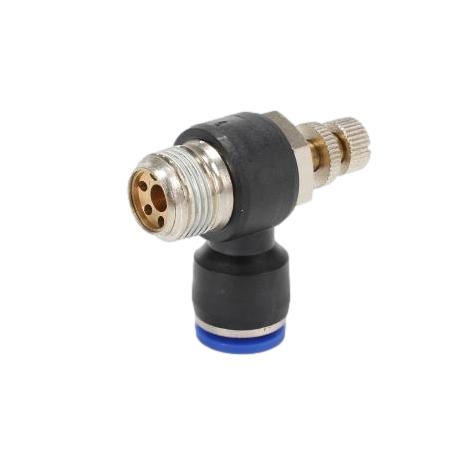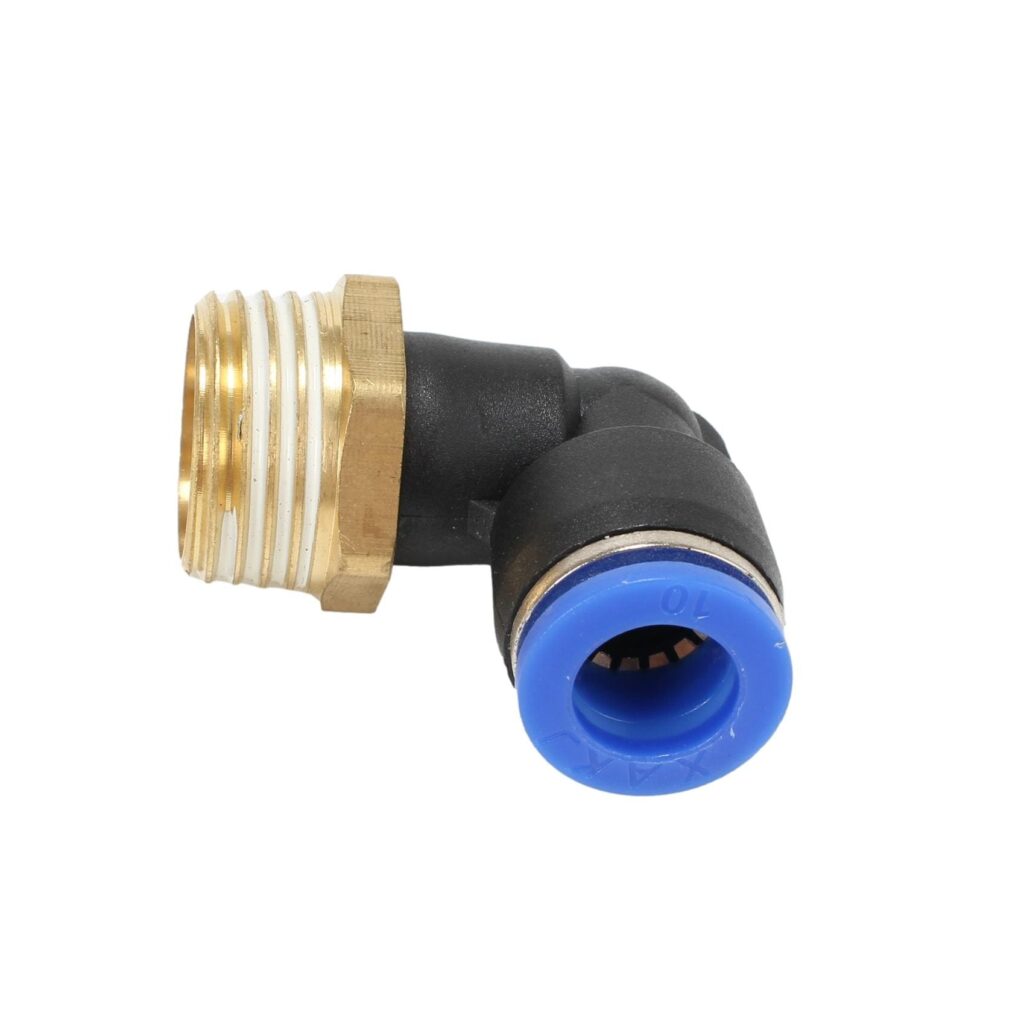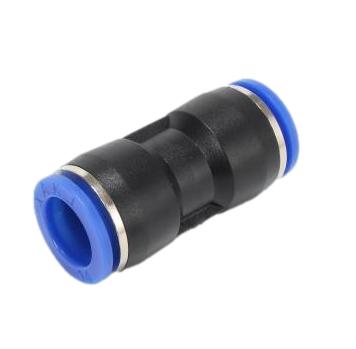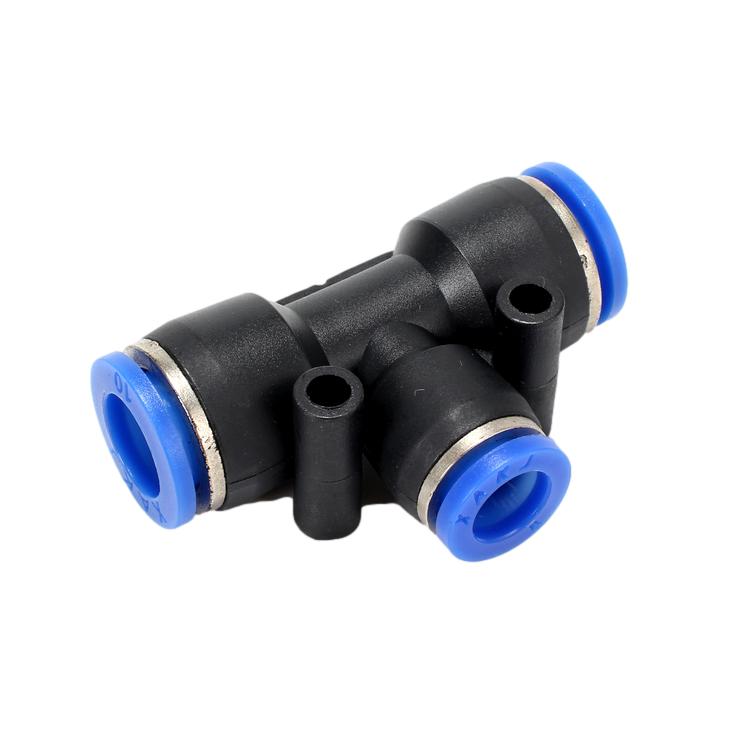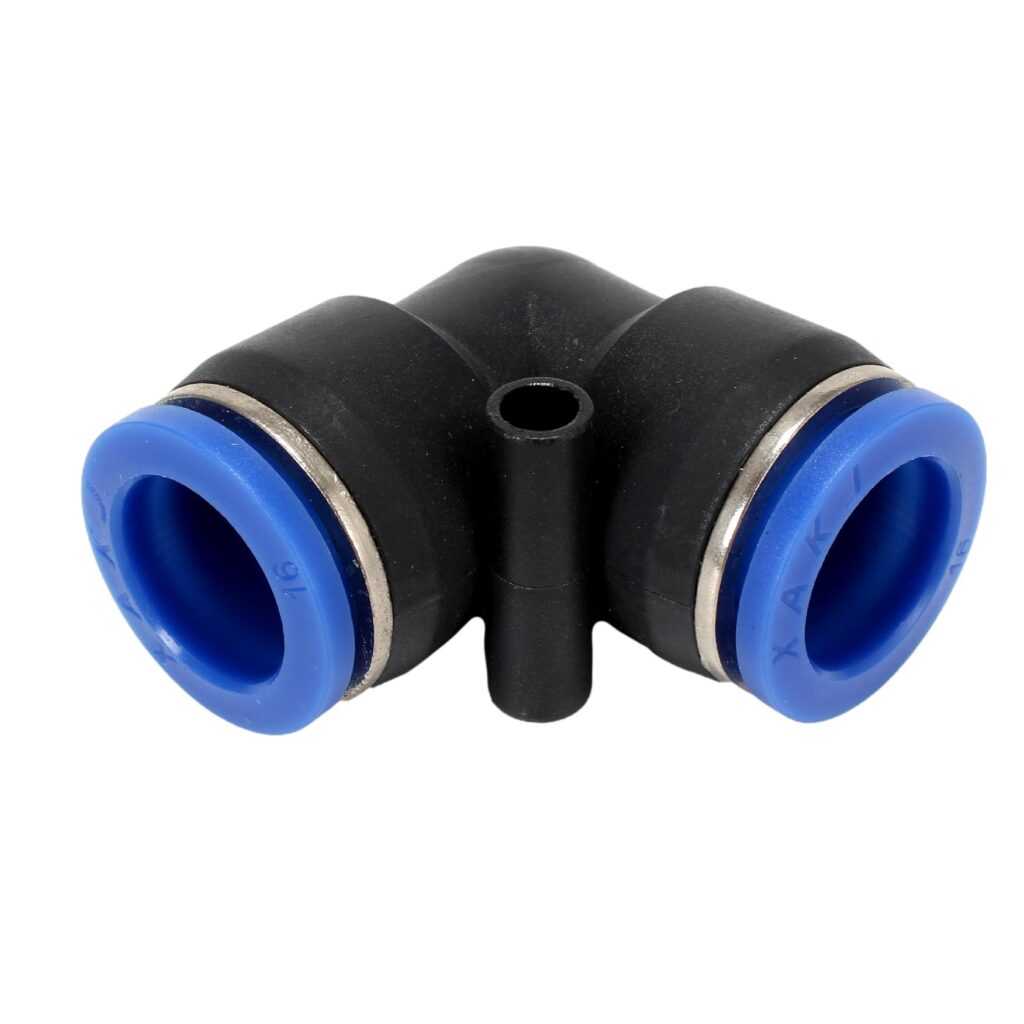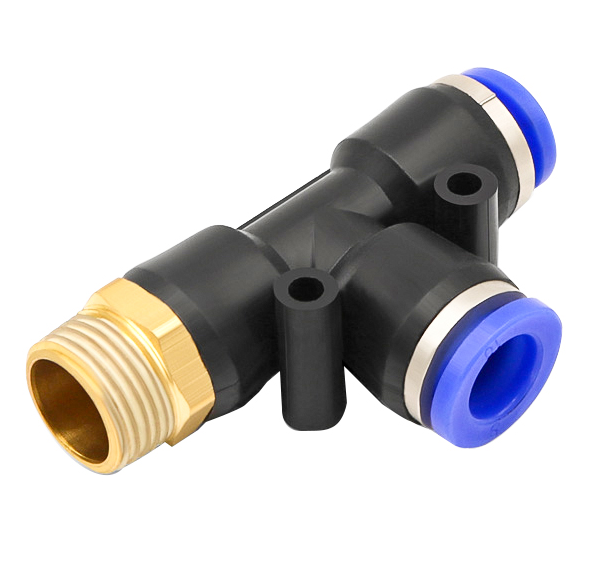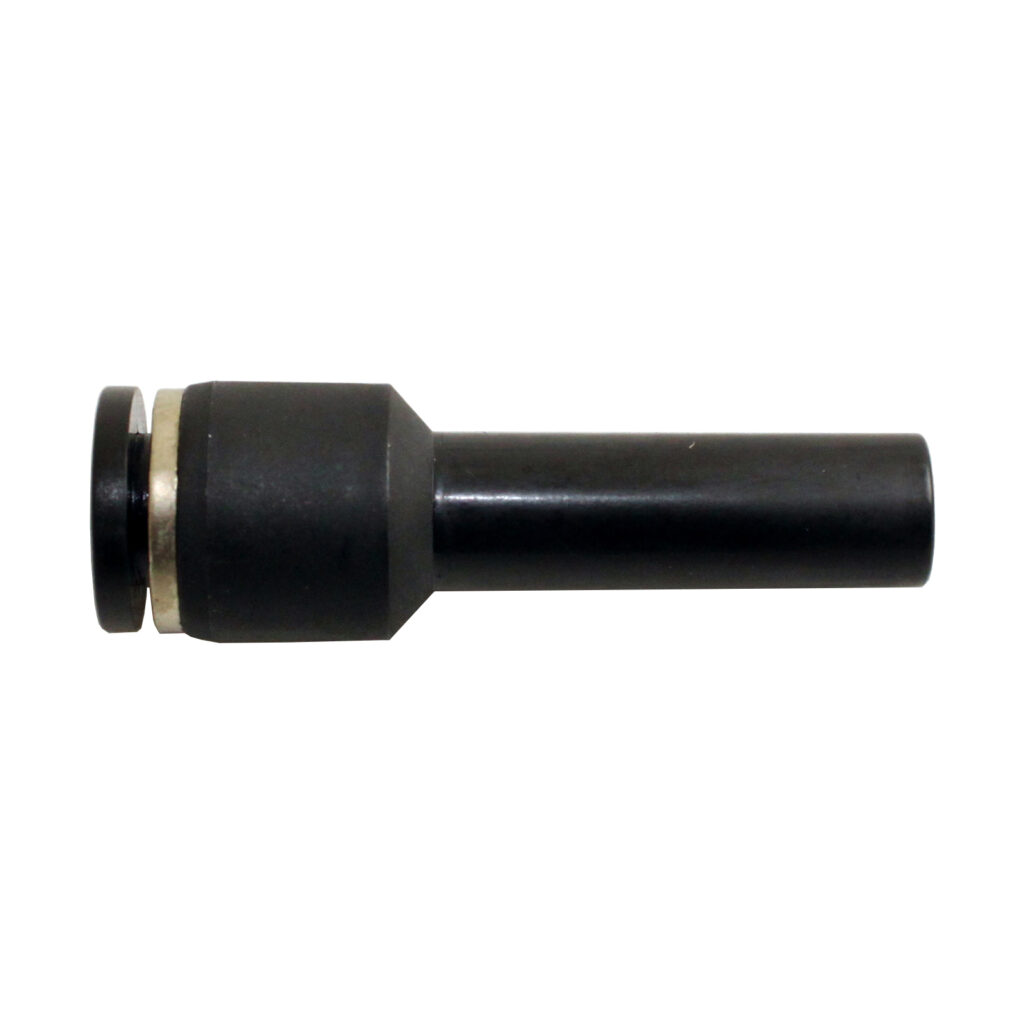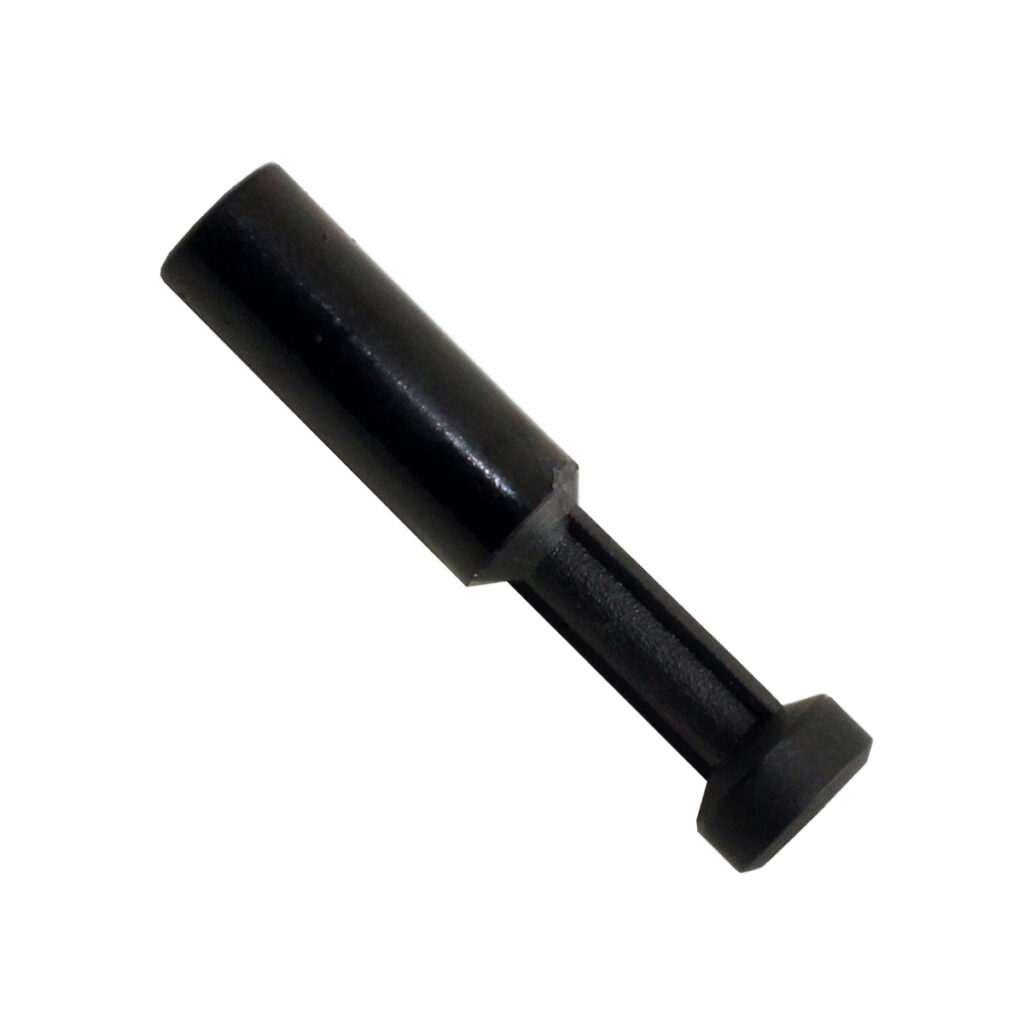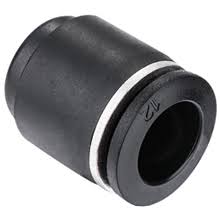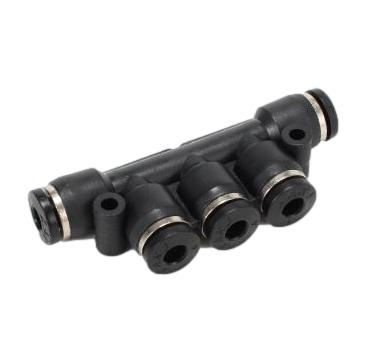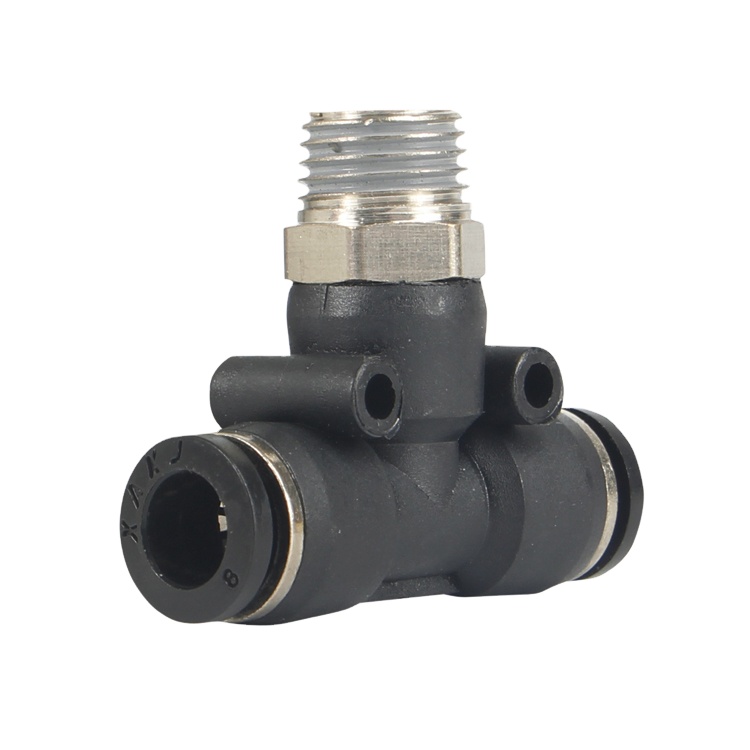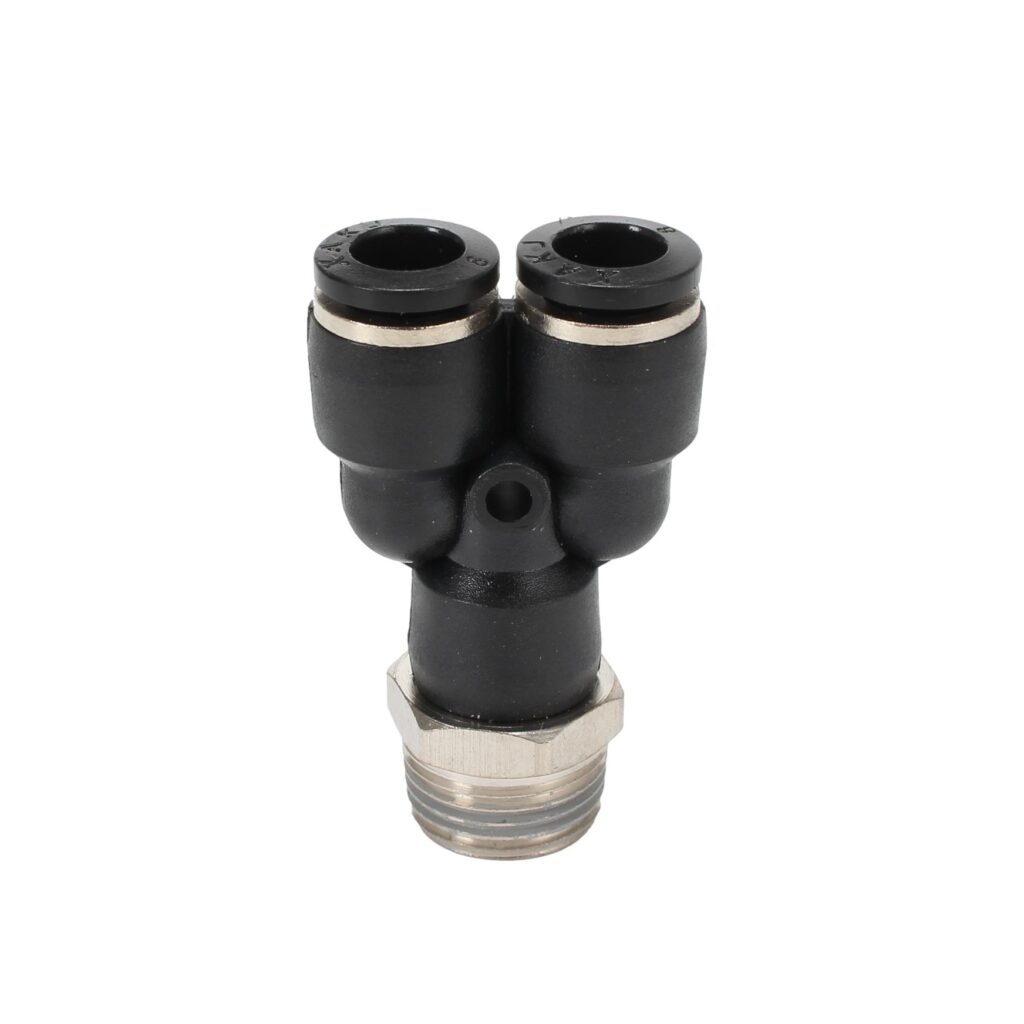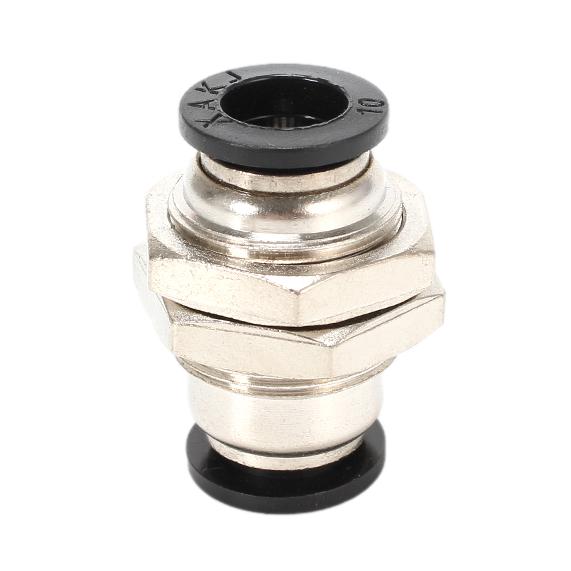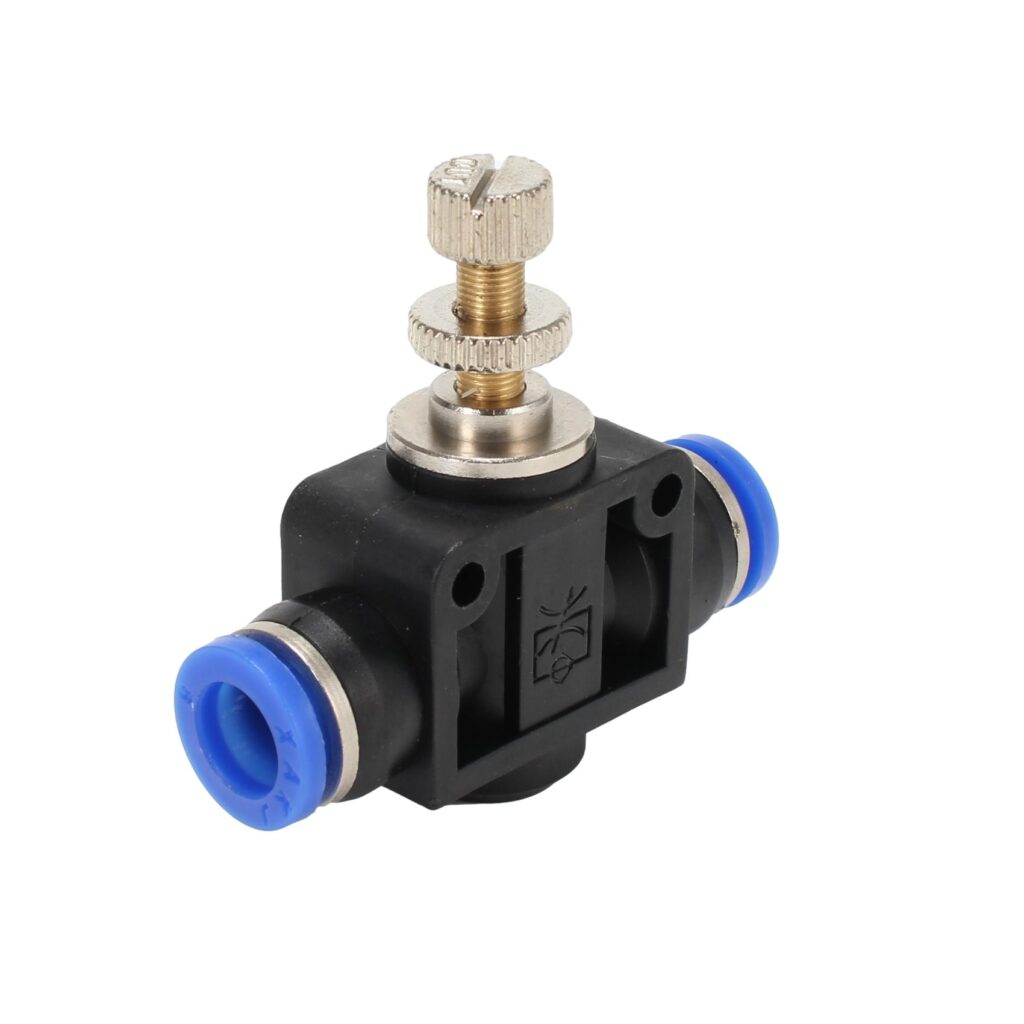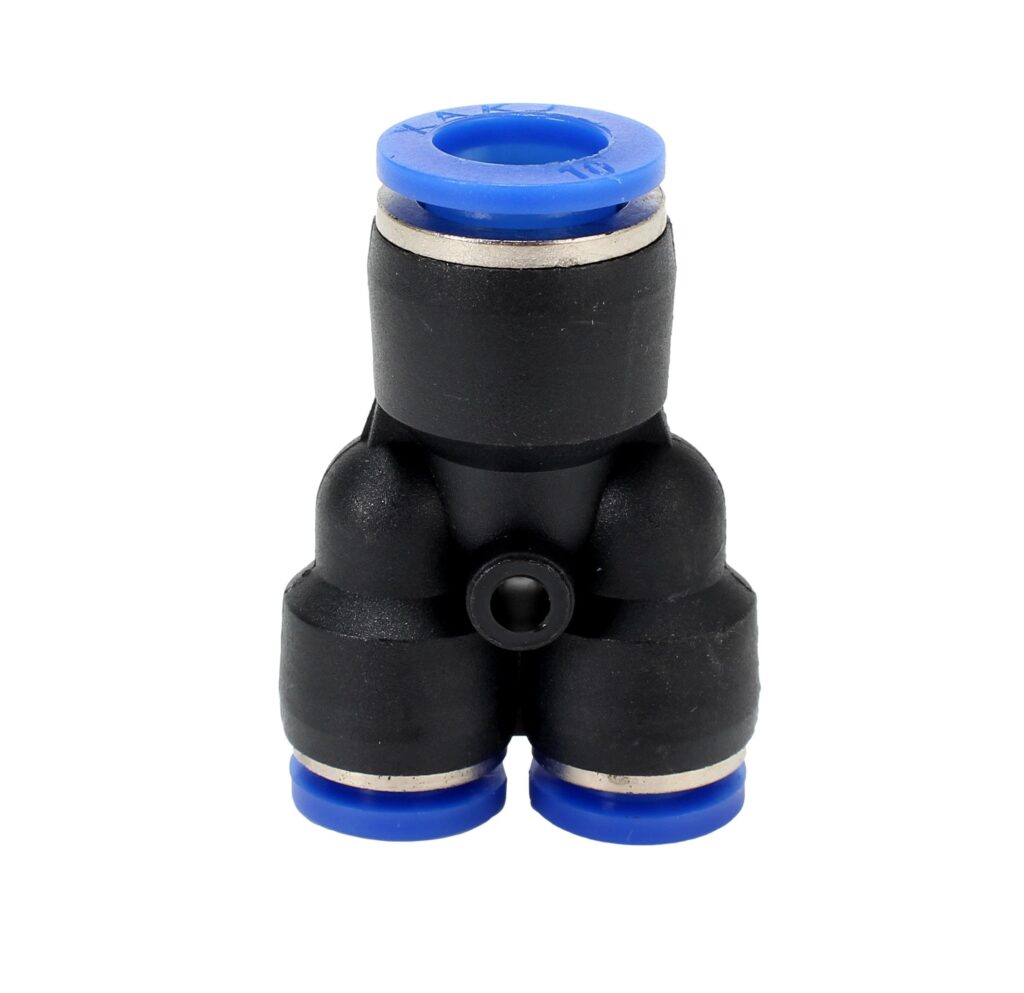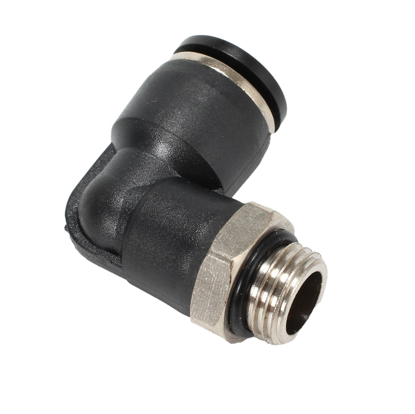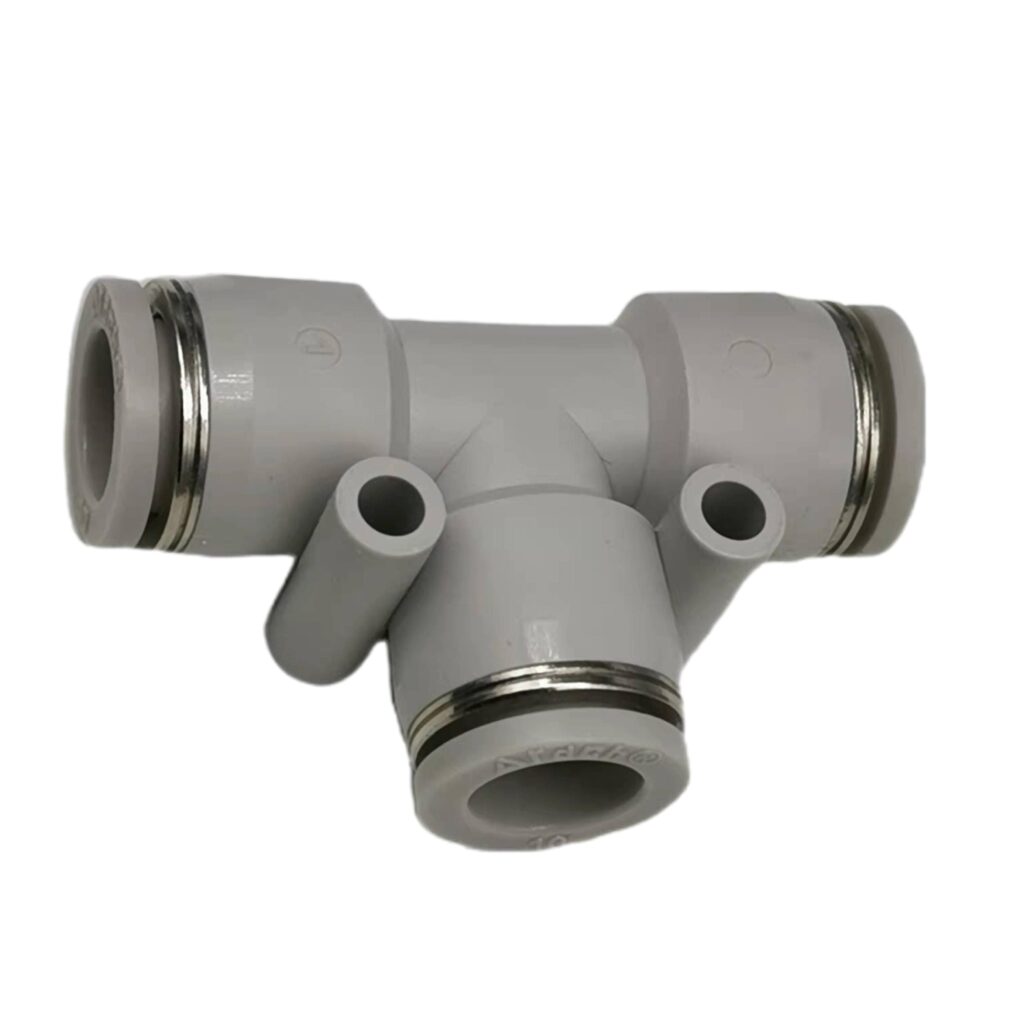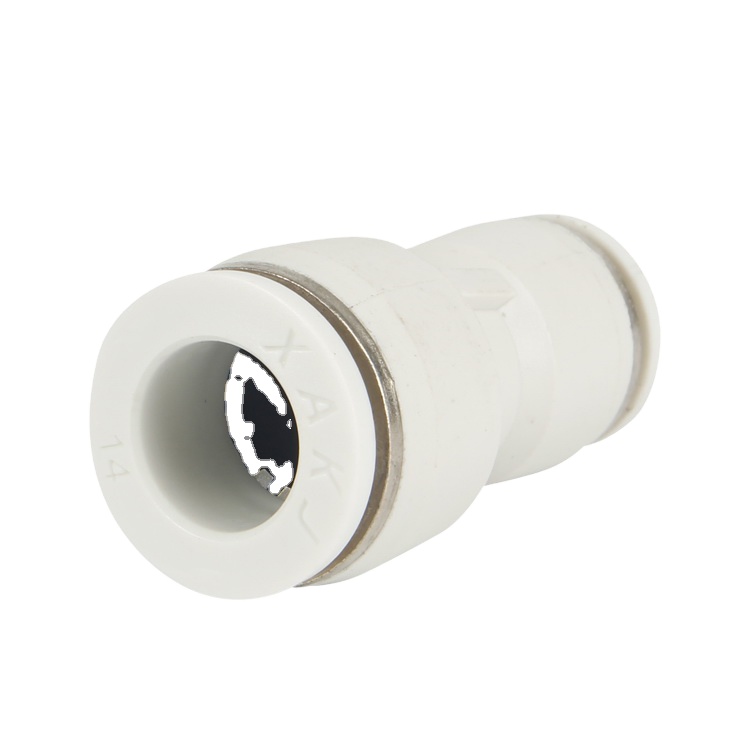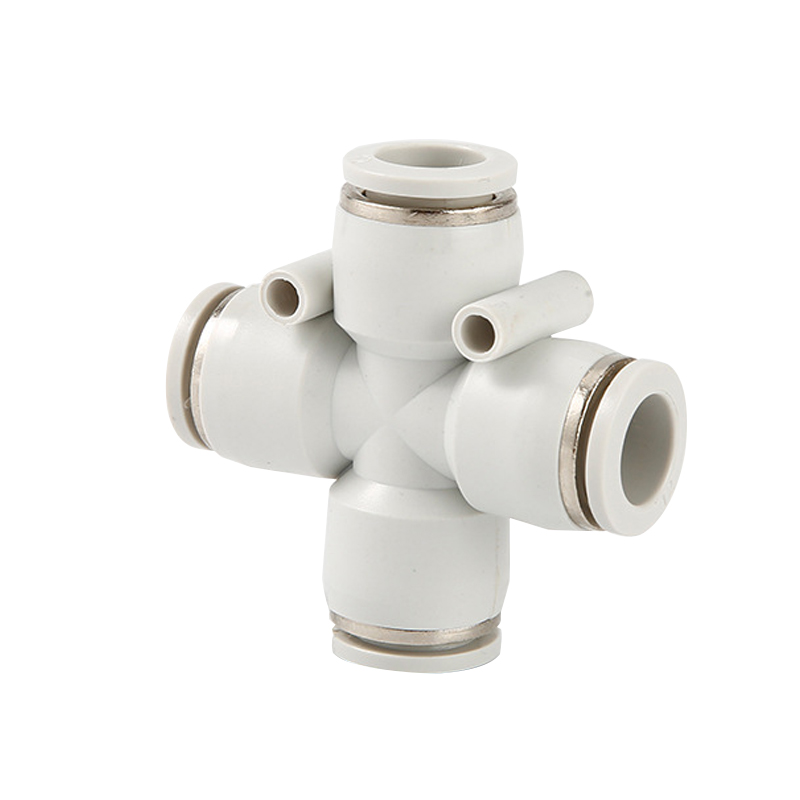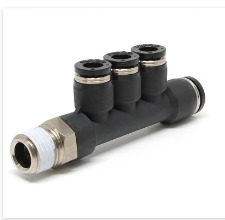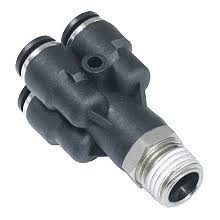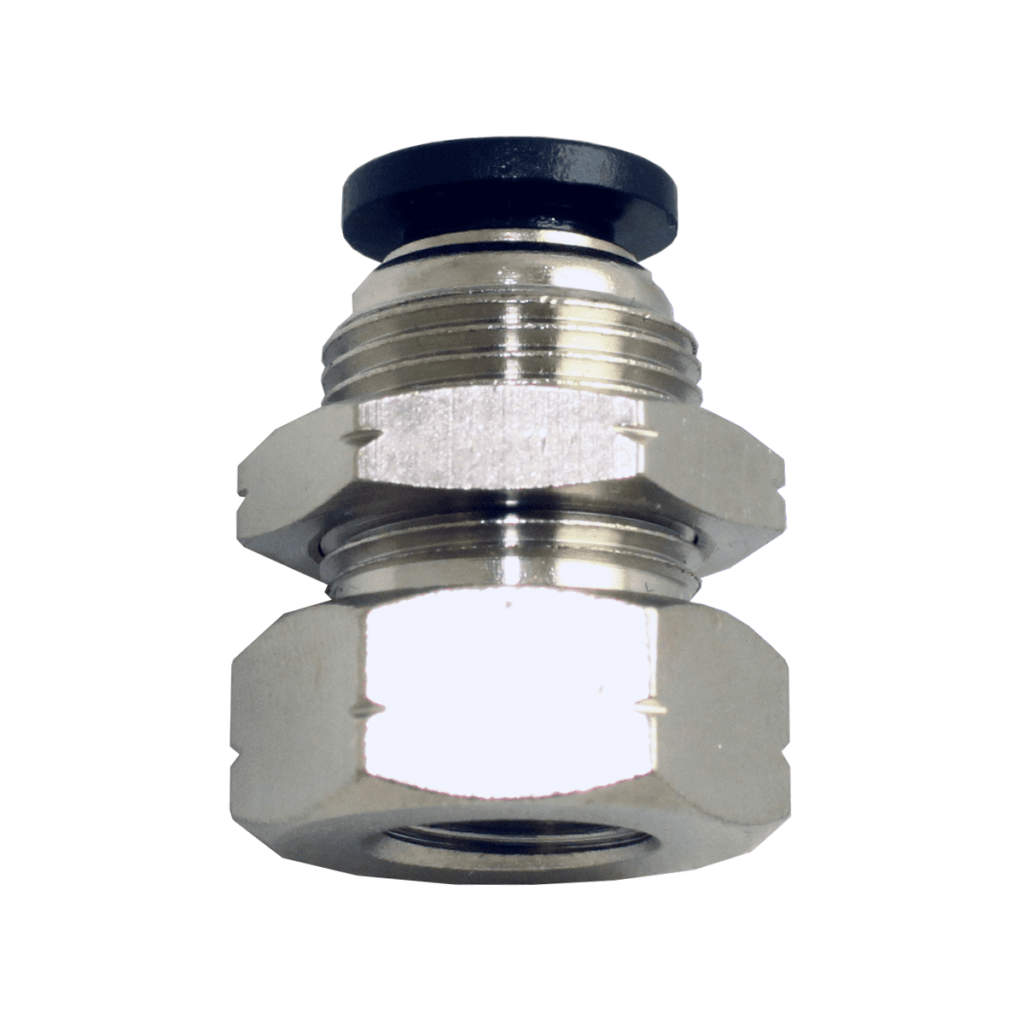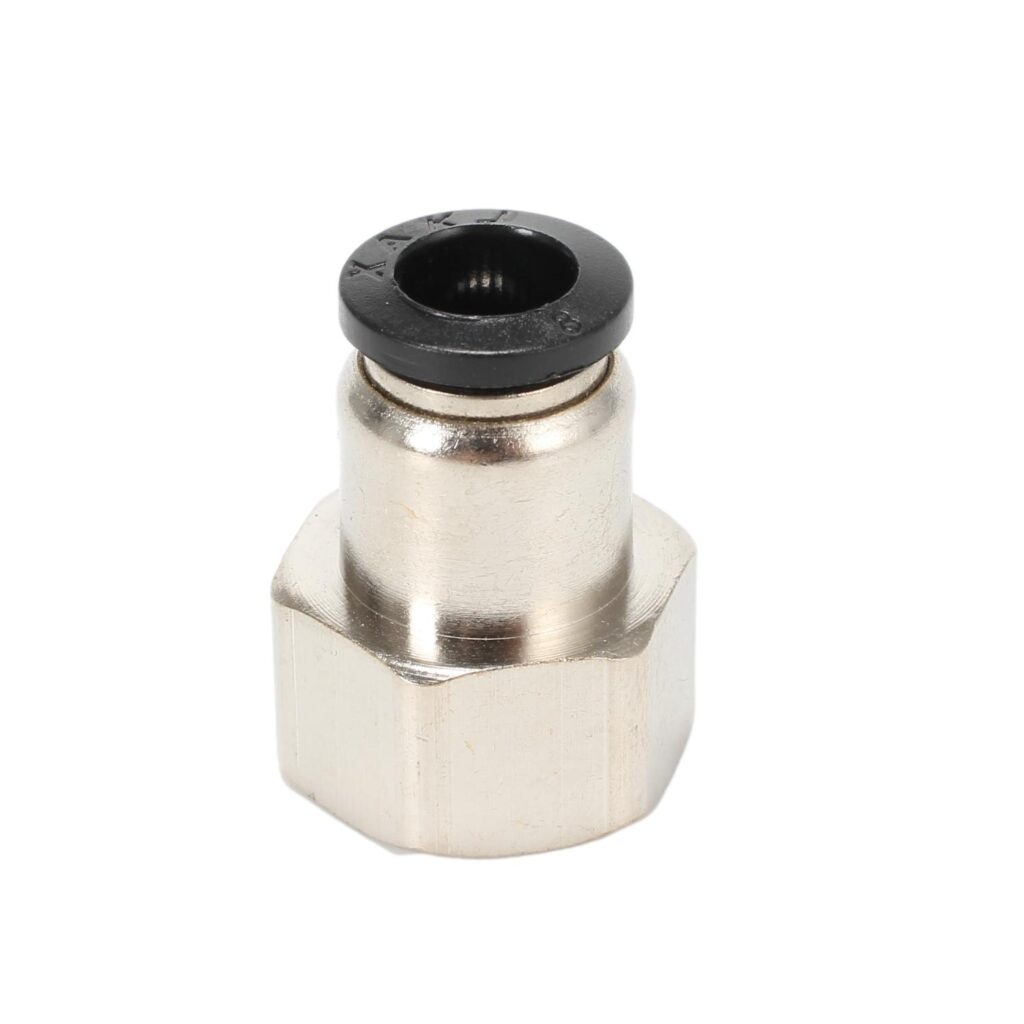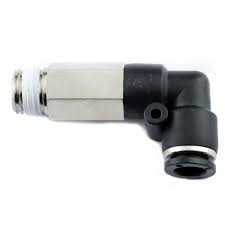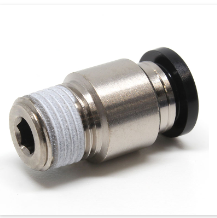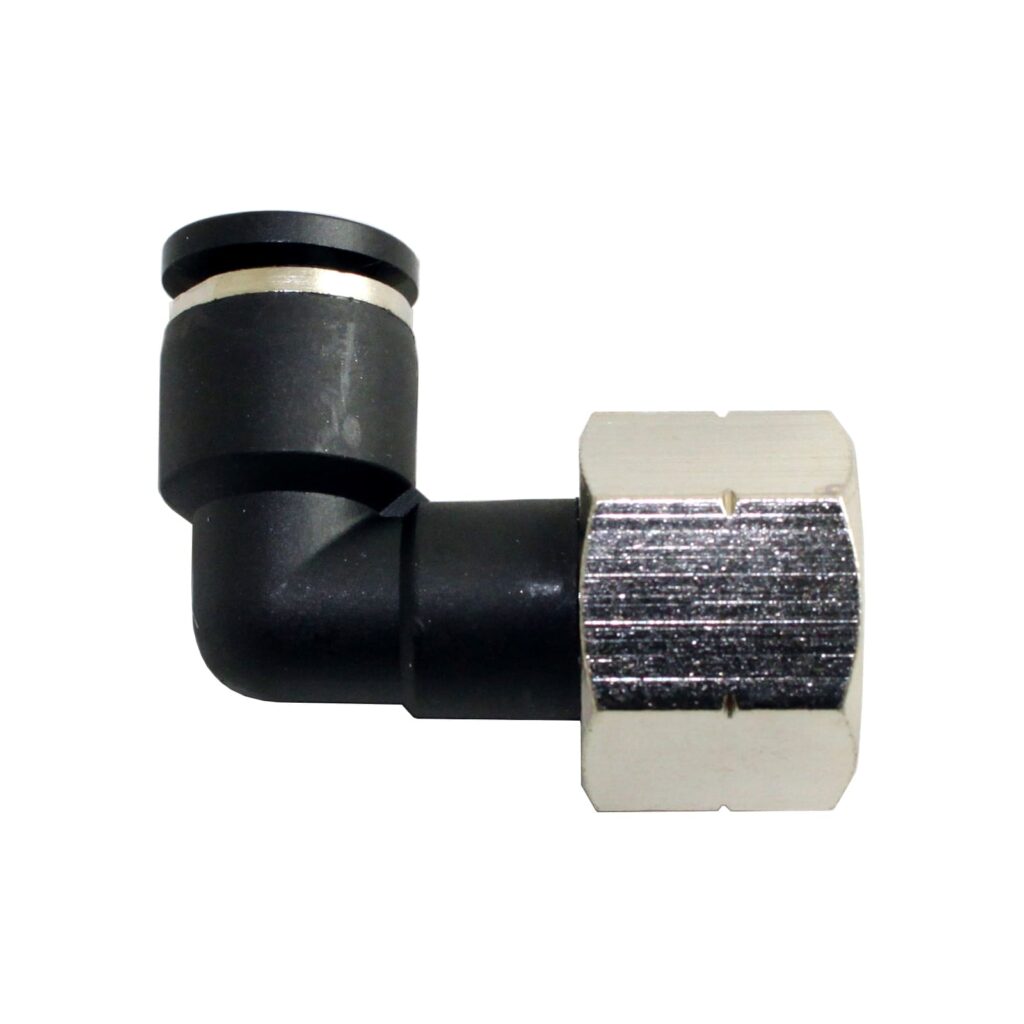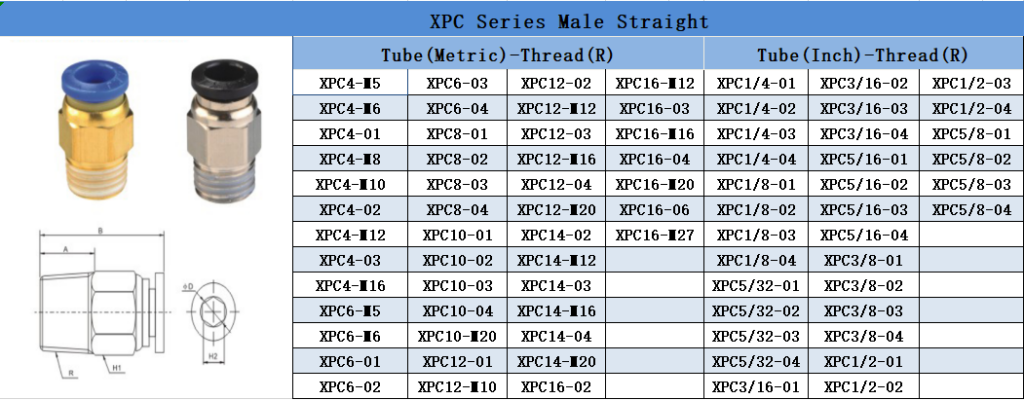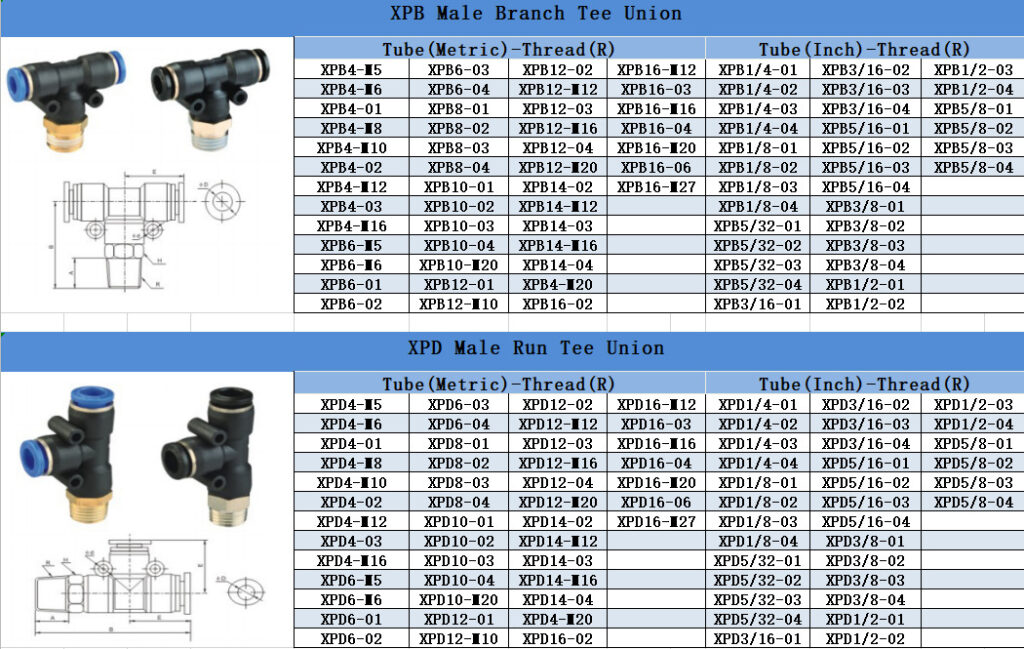
Your Trustful Pneumatic Fittings Manufacturer
Looking for a reliable supplier of pneumatic fittings?
Look no further – we’ve been in the business since 2011 and are one of the leading manufacturers of pneumatic fittings in China. We have a wide range of products available and can provide you with a free quote today.
Our fittings are made from high-quality materials and are designed to last. In addition, our fittings are also easy to install, so you can get up and running quickly. Plus, our prices are unbeatable – so you can get the best value for your money.
Contact us today to request a free quote or more information on our pneumatic fittings!
All You Need To Know About Pneumatic Fittings
Fittings Sizes, Types, Uses, in Pneumatic Systems
Pneumatic fittings are perhaps the unsung heroes of the industrial world. The word “pneumatic” comes from the Greek pneuma, meaning “air.” Without pneumatic fittings, air compressors, pneumatic tools, and other equipment would be unable to function. These fittings play a very important role in pneumatic systems. Connect all the other major components together, and can therefore have a major influence on the efficiency, safety, and energy consumption of the entire system. When selecting pneumatic fittings, it is important to consider the specific needs of the application. Factors such as operating pressure, temperature, and media compatibility should all be taken into account. With so many different types of pneumatic fittings available, it is important to work with a knowledgeable supplier who can help you select the right product for your needs.
Chapter 1
What is Pneumatic Fitting?
Pneumatic fitting is a kind of quick connector mainly used for air piping and pneumatic tools in pneumatic systems. Pneumatic fittings are also called push-to-pull fittings, push-to-connect fittings, push-in fittings, push-fit fittings, or instant fittings. These easy-to-remove connectors allow you to connect tubes with no tools required! Pneumatic fittings provide the essential link between tubes, hoses, and other components in a pneumatic system. These fittings can be used on all sorts of pipes of many sizes for many purposes.
Chapter 2
Advantages of Pneumatic fittings
1. Easy to install 
Pneumatic fittings are suitable and widely used in many industries because they offer a number of advantages over other types of fittings. They are easy to install and require no special tools or training, which makes them ideal for use in applications where the quick assembly is required.
2. High-Pressure Resistant, Corrosion Resistant, and Chemical Resistant
Pneumatic fittings are engineered to maintain a tight seal, and they are also designed to withstand extreme temperatures, environmental conditions, and other elements that can be tough on mechanical components. In addition to these characteristics, pneumatic fittings have high chemical resistance and can stand up to harsh industrial chemicals. This means that the materials used in construction are resistant to the effects of corrosion, oxidation, and a variety of acid solutions. Due to their excellent chemical resistance properties, pneumatic fittings can perform effectively in environments where aggressive chemicals are present. Furthermore, the materials used for manufacturing these components feature superior mechanical strength and toughness which allows them to resist wear from repeated pressure changes or vibration. The combination of these features makes pneumatic fittings a great choice for applications in industries like oil & gas, pharmaceuticals, food processing, water treatment plants, and more.
3. Highly Versatile 
Pneumatic fittings are highly versatile and suitable for a variety of tubing materials. This makes them ideal for use in a wide range of applications, from general purpose to specialty applications. Pneumatic fittings are available in a variety of sizes and configurations to meet the needs of any application. In addition, pneumatic fittings can be easily customized to meet the specific requirements of each application. Whether you need a simple connection or a complex multi-tube system, pneumatic fittings provide the perfect solution.
4. Wide Range of Sizes and Configurations 
Pneumatic fittings are a critical component in any pneumatic system, and they come in a wide range of sizes and configurations. The most common type of pneumatic fitting is the quick-connect fitting, which consists of a body, a sleeve, and a nipple. Quick-connect fittings are available in a variety of materials, including brass, stainless steel, and plastic. They are often used to connect tubing to valves, cylinders, and other components in a pneumatic system. Another type of pneumatic fitting is the push-to-connect fitting, which has a similar construction to the quick-connect fitting but does not require a sleeve. Push-to-connect fittings are also available in a variety of materials and sizes, and they can be used to connect tubing to valves, cylinders, and other components in a pneumatic system.
5. High Efficiency 
Pneumatic fittings are an integral part of any compressed air system. These fittings allow for the efficient and safe delivery of compressed air to tools, machines, and other components within a system. They create a very strong connection that is not susceptible to leaks. This is due to the fact that pneumatic fittings form a tight seal when they are connected, which prevents air from escaping. As a result, pneumatic systems that use these fittings are often much more efficient than those that use other types of connections.
6. Lock-tight 
Pneumatic fittings create a tight seal that prevents air leaks. This is essential in applications where air pressure needs to be carefully controlled, such as in pneumatic tools and machinery. This makes them ideal for applications where frequent maintenance or repair is necessary. Additionally, pneumatic fittings are less likely to loosen, making them more reliable than other types of fittings. Overall, pneumatic fittings offer a number of benefits that make them the preferred choice for many applications.
Chapter 3
How do pneumatic fittings work?
Pneumatic fittings are specialized components used to control and manage the flow of compressed air. These fittings are most often utilized in industrial environments work by forcing the fluid through small channels which in turn compress it. The more pressure that is placed on a fitting, generally speaking, means better quality and less maintenance required for your system because dirt won’t get stuck when you flush out pipes at least not as easily since there’s no obstruction between them anymore!
The pneumatic soft-start connector is a great way to prevent any shocks or sudden movements when starting up your machine. It will allow air pressure in the line slowly increase on first use, preventing that painful “pop” you sometimes hear from plastic because they don’t have rubber plumbing!T
Chapter 4
What are pneumatic fittings used for?
The function of pneumatic fittings is to connect sections of pipe, tube, and hose in pressurized gas systems. These fittings are often compared to hydraulic fittings because they have tighter seals but lower pressure requirements. Compared with hydraulic fittings, pneumatic fittings offer a much more efficient and cost-effective solution for many industrial, engineering, and commercial applications. These types of connectors can be found throughout logic control equipment for industrial processes as well instruments used by engineers who need high precision measurements at a distance from their sources without being susceptible to interference or feedback loops caused by other variables such as sound waves created when striking an object nearby which would change its frequency accordingly depending on how hard you hit it–this process is known scientifically called ” audiometry.”
The pneumatic fittings for compressed air are an important part of the pneumatic system. When you need to connect two pipes of different sizes, this is where pneumatic fittings come in. The air pressure from your compressor will cause these connections between the male and female parts–which can be metal or plastic-to close with the incredible force for the safe passage of fluid through them without damaging either air component!
Pneumatic fittings can be used in almost any industry, from manufacturing to transportation and construction. Among pneumatic connectors, push-to-connect fittings are most commonly found. Push-to-connect fittings are frequently found on machines or equipment that need high pressure like pumps for water treatments; boilers that generate heat energy (a process called “boiler operation”); gas smokers cook food at low temperatures using primarily carbon dioxide fuel but also include other gases such as hydrogen sulfide when burning natural liquids like oil synthetic fuels etc… Their most common usage is creating durable mechanical connections between pipes of different sizes with various materials insulation including rubber hose, metal pipe or tubing. A few examples would include plumbing fixtures during houseplant or planter manufacturers; wellhead pump installation service providers.
Want to know more about our products?
At XAKJ, we offer hundreds of fittings type in all sizes. Request a free quote from us today!
Chapter 5
Material Options of Pneumatic Fittings
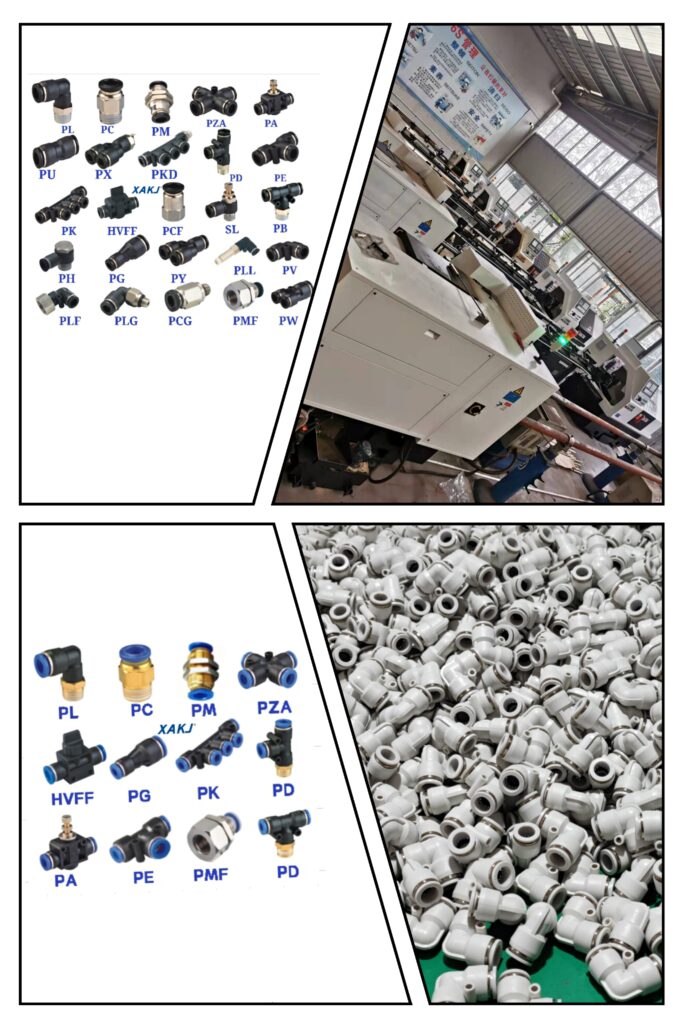
Plastic Push-to-Connect Pneumatic Fittings
The most popular kind of pneumatic fitting is the plastic push-in type, which uses these compressible metal tubes to connect two air tanks together. The plastic push-in fitting can be used for both Polyurethane and Nylon tubing, making it perfect for your regular working environment. It’s also an excellent choice if you plan on using fluids like air or water with this same type of pipe!
The advantage of using plastic is that it can withstand a significant amount of pressure, and the price for these fittings is very affordable, which will save your time and energy. However, these fittings’ temperature range is relatively small. When working with high temperatures or at height there may be some limitations. Furthermore, plastic push-to-connect fittings are not corrosion-resistant.
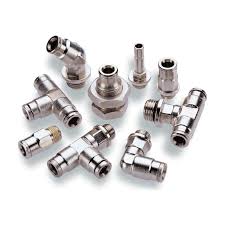
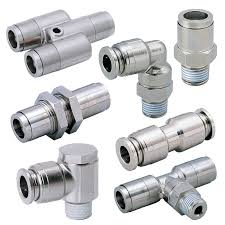
Brass Push-to-Connect Pneumatic Fittings
Brass Pneumatic Fittings can also be called push-to-pull, push-to-connect, push-in, push-fit, or instant fittings. The brass pneumatic fittings that come with your air tool kit are often made from nickel-plated, an affordable metal meant for making quick repairs on the go.
Advantage: The brass push-to-connect pneumatic fitting has an easy structure and can be used for high-temperature environments. It’s more durable than the stainless steel variety, but less so in corrosive conditions where it must also deal with chemicals that will reduce its life span significantly if not dealt with properly by qualified staff members who know how to work on these kinds of equipment safely without endangering themselves or others around them while doing their jobs effectively every day – which brings us back full circle!
Disadvantage: This type isn’t allowed inside a chemical manufacturing facility due mainly because there are too many risks associated should something go wrong during the installation process
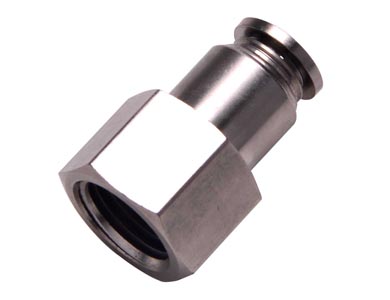
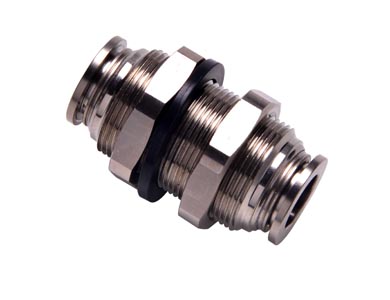
Stainless Steel Push-to-Connect Pneumatic Fittings
The ultimate in corrosion resistance, stainless steel fittings are made from high-quality stainless steel which makes them perfect for brewing beer or wine on tap.
The input is about push-inlet versus butterfly valves – but what really catches your attention may be their durability! The output stresses this point too by mentioning “high” levels of Ms followed quickly with lower case letters indicating small differences between sizes
Advantages: Stainless steel push-to-connect fittings has a lot going for it. It’s resistant to corrosion, which means they make longer projects to function, without worrying about the metal rubbing against each other and causing damage or leaks in your system; plus its strength makes them perfect as push-in fittings where they needn’t ever be eased open manually because manual force isn’t required whatsoever!
But there are a few downfalls too – like how difficult molding these components take compared with plastic ones AND their price is high.
Chapter 6
What are pneumatic fittings made of?
Take plastic push-in fittings for example
Release(Release Sleeve/Button/Cap/Collar):
Caps are used for push-in and pull-out pneumatic tubes. When the caps are pressed, they can release the tube locked by the clip spring. They are strong and durable.
Zinc Alloy Card Set:
Resistant to pressure and damage
Lock Clip Spring:
It has a large grip. It is a kind of fastener, which is installed in the shaft groove or hole groove of the machine and equipment, and plays the role of preventing the axial movement of the parts on the shaft or hole.
Lock Sleeve:
The upper end is connected to the silver ring, the fastening spring is fixed, and the lower end is connected to the sealing ring.
Clasp Sealing Ring:
The sealing ring has good sealing performance within the working pressure and a certain temperature range, and the sealing performance can be automatically improved with the increase in pressure.
High Strength Plastics:
High-quality raw material, smooth surface without bur, strong wear resistance. It is the connection for fluid flow.
Thread part:
Fix the fittings on the airline machine.
Chapter 7
Types & Sizes of pneumatic fittings
When choosing the right fittings for a particular purpose, there are numerous factors to consider such as: what type of material needs to be connected; what pressure levels will be present in the system; what diameter and thread pitch are needed; and if any other special requirements need to be taken into consideration. It is also worth noting that many fittings come in both standard and metric sizes, so it’s important to know which one will fit prior to purchasing. In this chapter, we’ll mention the most popular types of fittings and how to choose the correct size fittings. Hope it will be helpful for your choosing the right fittings.
1. Types of connections of pneumatic fittings
Pneumatic fittings are components used in pneumatic systems to connect tubes, pipes and hoses. Pneumatic fittings can be made of stainless steel, brass, aluminum, polypropylene, and other materials, depending on the requirements of the application. They typically feature threaded male or female ends that can connect to valves, cylinders, and other components in a pneumatic system. Soldering is a process used to join two or more metal items by melting a filler material (solder) between them with high heat. The solder is usually made of tin and lead, although modern environmental standards may call for lead-free solder which uses silver instead. The soldering process involves heating the two pieces to be joined with a soldering iron until they reach their melting point. Once melted, the liquid solder flows into the joint between the two pieces and seals them together as it cools down and hardens. This joint has very low electrical resistance because of its intimate contact with both surfaces being joined.
Fittings come in all shapes and sizes, with connections that are as diverse or limited by the imagination of their creator. From simple unions to ensure efficiency or elaborate designs meant for showpiece installations- shaped pieces offer creativity on behalf of designers who want nothing more than an elegant solution!
Below are the most popular types of connections:
T-Shaped
T-fitting is a pipe fitting that allows the flow of fluid to be split into three directions. It is so named because it resembles the letter “T”. The angle between the two legs can be any angle but is typically 90°. T-fitting is commonly used to distribute fluids from a single source (such as a pump) to multiple destinations (such as several tanks). They are also used for splitting off flows from one main line
Cross-shaped
Cross-shaped fittings intersection connects four flow sections, allowing flow to be split apart or combined.
Cross-shaped fittings are often used to connect hoses, tubes, and wires. These items are also used in medical equipment and machinery. The cross shape makes them easier to handle than other types of fittings. They have a wide variety of uses, including connecting tubing for air compressors, vacuum pumps, and water pumps. Cross-shaped fittings can also be used to make custom-length extensions for any kind of tubing or wire that you may need.
Straight
Straight fittings are the most common type of pipe fitting, and it’s what you’ll find on any drain or water line. In some countries and areas, people also called it nipple. Nipple fittings connect a hose in a straight line. They have an easy-to-use clip that connects them to their respective component with just one quick motion!
Union
Y-shape fitting is a type of pneumatic fitting, it’s mainly used for connecting two pipes. The Y-shaped fitting has three kinds: One is straight Y-shaped fittings, another one is L shape fitting and the last one is T shape fitting. As its name shows, the straight Y-fitting can connect two pipes in a straight line; the L-shaped fitting can connect two pipes in an L shape way; the T-shaped fitting can connect two pipes at a 90-degree angle.
Elbow
Pneumatic fittings are essential for redirecting the flow of air in a pneumatic system. Elbow fittings change the direction of the airflow at various angles, without the risk of kinking the tubing. The most common elbow angles are 45° and 90°, but elbows also exist in 22.5° angles for more specialized applications.
Reducer
Reducer fittings are used to connect tubing of different sizes together. They are often used to connect a smaller-diameter tube to a larger-diameter tube, and can also be used to adjust the flow of fluid through a system. Reducer fittings are made from brass, plastic, or stainless steel, and are available in a variety of sizes.
Bulkhead
A bulkhead fitting allows you to route tubing through a wall, floor, or ceiling. This type of pipe fitting is commonly used in construction and industrial applications. If you need to direct the flow of liquids, gases, or other materials between two different areas, then consider using a bulkhead fitting. These fittings are available in various sizes and configurations depending on the specific application.
A bulkhead can be installed anywhere that you have an opening through which your tubing needs to pass. The tube extends from
Push-In
Pneumatic fittings are Push-In fittings that make connecting airlines quick and easy. With no tools required, you can quickly connect or disconnect your airlines with just a push of the release sleeve. Pneumatic fittings are available in a variety of sizes and configurations to meet your needs.
Threaded
Threaded fittings are a type of plumbing component that has been particularly designed to fit with specific kinds or pipe sizes. They have threads on either side and can be screwed into place securely, making it easy for you as the installer (or drain cleaner) to work efficiently without too much fumbling around!
They’re used for things like pipes, hoses, and other plumbing fixtures where you need to connect two pieces of metal together end-to-end with nothing in between except air or watertight sealant at either side so they stay dry
Manifold
Manifold fittings are necessary for connecting various hoses and pipes together. These joining pieces can be found on the intake side of many cars, as well as carburetor bowls in refrigerators or air conditioners to name just a few examples!
Plug-in fittings
The plug-in fittings are the ones that have a piece of metal or plastic in them. These pieces can be removed from one end to make it easier for you when connecting two pipes together without having any leaks, etc.! In general, these parts come in many different sizes so there will always be something appropriate just waiting on your shelf at home if needed by whoever uses this type of equipment primarily – engineers or welders alike
Plug and cap fittings
Plug and cap fittings are used when the flow of air needs to be temporarily terminated or capped
Throttle Valve
The throttle valve fittings are the most important part of an engine. These valves control how much air gets into each cylinder, which means they also affect speeds and power output! If you ever have any doubt about your car’s operation because it doesn’t feel or sound right – make sure to check these things first before looking anywhere else.”
Hand Valve
Hand valve fittings are really important for your plumbing system. As the name suggests, they use hand pressure to control water flow and relieve strain on other parts of the installation like joints or sprinkler heads that may not be able to withstand sudden changes in force from valves’ open position.
2. How to choose the correct sizes of pneumatic fittings?
The pneumatic fitting has its own measurement system. The measurement system of pneumatic fittings is a process of calculating and determining the size, lengths, and shape of fittings used in fluid power applications such as pneumatics and hydraulics. This system includes measurements related to pressure, temperature, flow rate, and pipe connection sizes. The correct size of pneumatic fittings is critical to performance and longevity. it is necessary to match up threads appropriately when connecting pneumatic fittings together in any system configuration. The threads must be compatible between two different parts so that they can properly seal and hold pressure within the system without causing any leaks or malfunctions along the way. Ensuring that all threads match up correctly before installing helps guarantee optimal performance levels during use and prevents unnecessary complications down the line due to poor installation practices. What we will discuss below provides some guidelines when selecting the correct size plastic, brass, or steel fitting based on various factors such as pressure rated (psi), thread type desired, length needed etcetera; however everyone has their own preferences so ultimately whatever works best within budget constraints must become final decision maker!
Chapter 8
What's the difference between NPT, BSPT, BSPP Thread?
NPT Thread
NPT is the standard for 60-degree tapered pipe threads in the United States, is the abbreviation of National (American) Pipe Thread, which is commonly used in North America. Male NPT fittings have a tapered thread that wedges into the female NPT fitting. They seal due to the “out-of-roundness principle,” which means that the male connector stretches the female connector until there is enough force that the connector can withstand the pressure. One of the challenges with this design is that if you are joining stainless to stainless, over-tightening or poor lubrication can cause the threads to clog and damage. Thread sealant is required to seal, but only 2 turns of thread sealant are required. Otherwise, the seal will leak around the thread sealant. Ralston Instruments has a wide variety of male NPT adapters, male quick disconnect NPT fittings, male MPT calibrator fittings, female NPT fittings, female NPT gauge fittings and female quick disconnect NPT gauge fittings.
BSP(T) Thread
BSP is the British Standard for Parallel Pipe Threads. BSP (BSP (parallel)) threads refer to the cylindrical pipe threads in the British General Seal Pipe Threads (R), a type of Whitworth thread. Cylindrical internal thread Rp (old standard: Ps) and tapered external thread R (old standard: PT) are generally used to achieve the sealing effect.
BSPP Thread
BSPP Thread is also known as G thread. BSPP (British Standard Parallel Pipe) is most popular in the UK, Europe, Asia, Australia, New Zealand and South Africa. It is a parallel threaded fitting that uses a bonded seal to seal. This bonded ring seal is sandwiched between the shoulder of the male fitting and the face of the female fitting and is squeezed into place.The BSPP gauge has a long male thread and uses a copper squeeze washer which is squeezed between the bottom of the male fitting and the bottom of the female BSPP hole to create a pressure seal. No thread sealant is required to form a seal. Ralston Instruments has male BSPP adapters, female BSPP adapters, female BSPP gauge adapters and female BSPP quick disconnect gauge adapters.
Chapter 9
Pneumatic Fittings Manufacturing Process
If you want to know how to produce pneumatic fittings, then this is for you. It’s not as difficult and time consuming to make one, but it can be tricky. Here is an in-depth guide video on how to produce pneumatic fittings. Hope it will be helpful for your business
Chapter 10
How to choose the pneumatic fittings to match the tube?
Size Selection:
Make sure to choose the size that will fit your tube. The wrong-sized pneumatic fitting can create problems for you down the line, so it’s important not only do they match up but also seal properly as well!
Taking PU tube 8*5 for example, it means that the outer side of the tube is 8mm and the inner side of the tube is 5mm. When selecting pneumatic fittings to connect PU 8*5, the tube size of fittings should be 8mm. In summary, the outer side of the tube is equal to the size fittings’ tube side.
Tube Type:
Besides size, you also need to take the type of tube or hose into account, whether it is measured in metric or imperial sizes, and whether it’s made of metal or thermoplastic. When discussing the various types of hoses, it is important to differentiate between tube, pipe, or hose.
Hoses are often confused with pipes, but they’re actually quite different. A hose is a flexible tube that can be pulled back and forth like an elastic band; it has no covering (such as metal) around its circumference to prevent leaking or bursting under pressure from kinks in the line which would create dirtier water due where objects sliding along them at varying speeds might cause scratches against exposed surfaces causing scaling/corrosion). Pipes on other hand usually have a rough outer surface to extend durability – typically made out of cast iron-and sometimes lined internally too so foreign materials don’t get stuck inside.
Chapter 11
Considerations in buying pneumatic fittings
1. Purpose
What’s the purpose of the pneumatic fittings? The use of pneumatic fittings has been around for a long and continues to be an extremely useful method. These devices are used in different industries, including the transportation industry where they admit or expel air under pressure from separate sources such as tanks inside vehicles which provide power through various means like hydrants on streets next door parking spaces near stores, etc., allowing us our daily lives everywhere we go! For example, Gas compatibility is an important factor to consider when using pneumatic fittings in any type of system. Pneumatic fittings are components that are used to create a connection between two different types of materials or systems, allowing for the transmission of air or other gases. Ensuring the proper gas compatibility between these components and the gases they will be working with is essential for safe and effective operation. This includes having knowledge about the type of gas being used, as well as understanding its pressure range. Therefore, when choosing pneumatic fittings, you need to take the application into your consideration.
2. Temperature & Pressure requirement
The difference in material between pneumatic fittings can lead to a big change in how well they function at different temperatures and working pressure. For plastic push-in fittings, the temperature tolerance is 0 – 60 degrees and the working pressure is between 0 and 10.34 bar. For brass push-in fittings, the temperature tolerance is from -10 to 60 degrees and the working pressure is between -0.8 and 15 bar. For stainless steel push-in fittings, the temperature range is from -20 to 200 degrees and the working pressure is between 0.99 and 15 bar.
【1psi=6.895kPa=0.0689476bar =0.006895MPa】
3. Media
Media can have a huge effect on how long your water pipes will last. Some types of media are corrosive, while others may be abrasive and create damage to the material that they’re flowing through over time if left unchecked by cleansings or flushings as needed per installation guidelines for each specific fittings type/size you choose from our store inventory list (we offer many)! You should also consider what kind of temperature level it operates at because high-pressure levels mean colder temperatures which could cause brittle ice crystals to build up inside one’s system causing bursts and possible leaks during winter months.
4. Material
The right material choice for your media is important because it can have a significant impact on how long those pesky fittings will last. Corrosion-resistant materials work best with acidic fluids and high-pressure environments while metal alloys make excellent choices under thermal tension or intense heat levels–just be sure they’re up to snuff when exposed to higher temperatures!
5. Tube Consideration
The fitting’s diameter is the same as pipes, so it can withstand high pressure. However when you have smaller fittings that don’t fit onto your plumbing system well due to warping or bending they may cause leaks outside of where they’re installed on buildings as well!
6. Thread Type
When buying pneumatic fittings, the type of thread that it has is something you should consider.
A few options include BSPT (Registered SGS), Metric M30 x 1 mm NPT, or UNEF JIC female fitting which all have different benefits depending on your application needs For instance if strength and durability are key factors in getting through tough situations then maybe going with one out such as BS 38 headlined steel would be more appropriate but when cost matters most than anything else this might not really matter so much.
7. Fittings Supplier
Fittings suppliers are the key to success when it comes to industrial fittings. They should be able to provide customers with all their needs, from an informed perspective on what’s needed for various applications in different industries or companies across a wide range of sectors including manufacturing plants & offices buildings contractors, etc., as well as help them find out more about how best suited certain types would actually work within these specific environments before making any purchase decisions so you can avoid wasting time or money trying something only half-way suitable which could lead up costly mistakes down the road.
Chapter 12
What to look for in a fitting supplier or manufacturer?
Quality
A good fittings supplier or manufacturer should have various quality levels to meet different customers’ needs. Besides, quality assurance is the top priority in selecting fittings suppliers. In the pneumatic fittings field, good quality can be measured in a specific way, like heavier copper, tighter seals, high product pass rate, no leakage, etc.
Price
It is clear that price plays an important role in any business cooperation. The cost-effective prices can make customers more competitive with their own market, which will help them to succeed in the industry of competition. A cost-effective price can help customers be very competitive in their own market. However, price is not everything. When selecting pneumatic fittings suppliers, we should avoid cut-throat competition and make sure the price matches its value, but not only low in price.
Variety of fittings
Professional fitting suppliers have a wide range of fittings. They ensure that their expectations are clear, which is why they also keep an ample inventory on hand to meet customer needs quickly in case anything goes wrong with one shipment or another!
Quick: Quick Reply & Fast Delivery
A professional fittings supplier should quickly respond to customers’ inquiries or demands in the first place. In XAKJ, we promise to reply to customers within 24 hours. Besides, on-time delivery is very important in selecting a fittings manufacturer. Here in XAKJ, for products in stock, the delivery date will be within 3 days. For regular items, the delivery date will be around 7-15 days.
Sales Team
Our sales team can help you with price and shipping calculations, and they mainly handle pre-sales issues.
278, weiqi road, economic development zone
Yueqing City, Zhejiang Province, China
Technical Support
Our technical team can help you customize and design your product, and they mainly handle after-sales issues.
278, weiqi road, economic development zone
Yueqing City, Zhejiang Province, China
Skyrocket your sales today
What you need is a true veteran of the pneumatic industry. Let Wolfitting.com help you become top in the field.


